 | ||
Surf culture is the culture that includes the people, language, fashion, and lifestyle surrounding the sport of surfing. The history of surfing began with the ancient Polynesians. That initial culture directly influenced modern surfing, which began to flourish and evolve in the early 20th century, with popularity spiking greatly during the 1950s and 1960s (principally in Hawaii, Australia, and California). It continues to progress and spread throughout the world. It has at times affected popular fashion, music, literature, films, art, jargon, and more.
Contents
- Surf culture
- Big Wave culture
- Localism
- Surf Gangs
- Wolfpak
- Bra Boys
- Surf terminology
- Beach bunny
- Shaka sign
- Issues affecting surfers
- Surf Environmentalism
- Surf tourism
- Spirituality
- Surf music
- Surf rock
- Surf pop
- Instrumental
- Surf visual art
- Fashion
- Events
- Surfing contests
- Surfing organizations
- Boardsports
- Films about surfing
- TV documentary series
- TV episodes featuring surfing
- Fictional surfers in TV
- Television advertising
- Surfing magazines
- Conceptual metaphor
- Popular
- Academic topics
- Comics
- Prose
- References
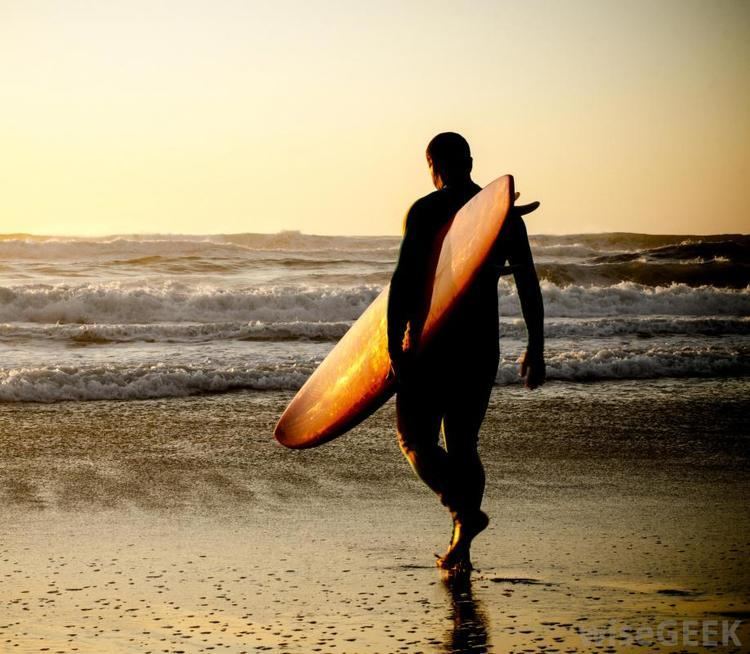
The fickle nature of weather and the ocean, plus the great desire for the best possible types of waves for surfing, make surfers dependent on weather conditions that may change rapidly. The staff of Surfer Magazine, founded in the 1960s when surfing had gained popularity with teenagers, used to say that if they were hard at work and someone yelled "Surf's up!" the office would suddenly be empty. Also, since surfing has a restricted geographical necessity (i.e. the coast), the culture of beach life often influenced surfers and vice versa. Localism or territorialism is a part of the development of surf culture in which individuals or groups of surfers designate certain key surfing spots as their own.
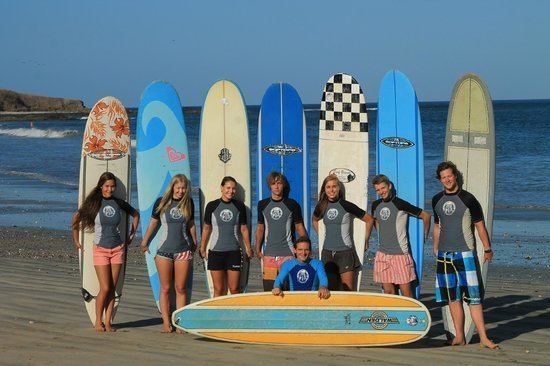
Aspects of 1960s surf culture in Southern California, where it was first popularized, include the woodie, bikinis and other beach wear, such as boardshorts or baggies, and surf music. Surfers developed the skateboard to be able to "surf" on land; and a number of other boardsports.
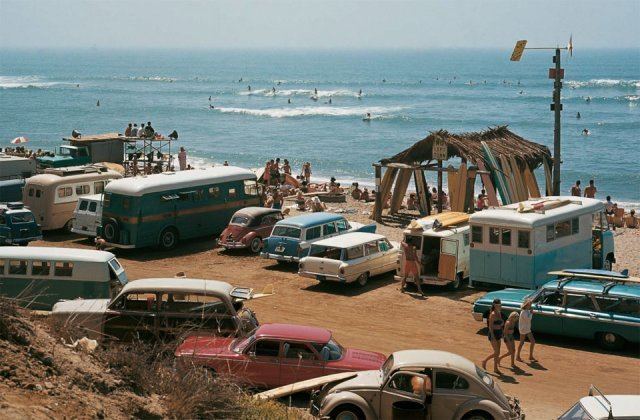
Surf culture
Big Wave culture

A non-competitive adventure activity involving riding the biggest waves possible (known as "rhino hunting") is also popular with some surfers. A practice popularized in the 1990s has seen big wave surfing revolutionized, as surfers use personal watercraft to tow them out to a position where they can catch previously unrideable waves (see tow-in surfing). These waves were previously unrideable due to the speed at which they travel. Some waves reach speeds of over 60 km/h; personal watercraft enable surfers to catch up to the speed of the wave, thereby making them rideable. Personal watercraft also allow surfers to survive wipeouts. In many instances surfers would not survive the battering of the "sets" (groups of waves together). This spectacular activity is extremely popular with television crews, but because such waves rarely occur in heavily populated regions, and usually only a very long way out to sea on outer reefs, few spectators see such events directly.

Though surfers come from all walks of life, the basis of the beach bum stereotype comes from that great enthusiasm that surfers can have for their sport. Dedication and perfectionism are also qualities that surfers bring to what many have traditionally regarded as a commitment to a lifestyle as well as a sport.
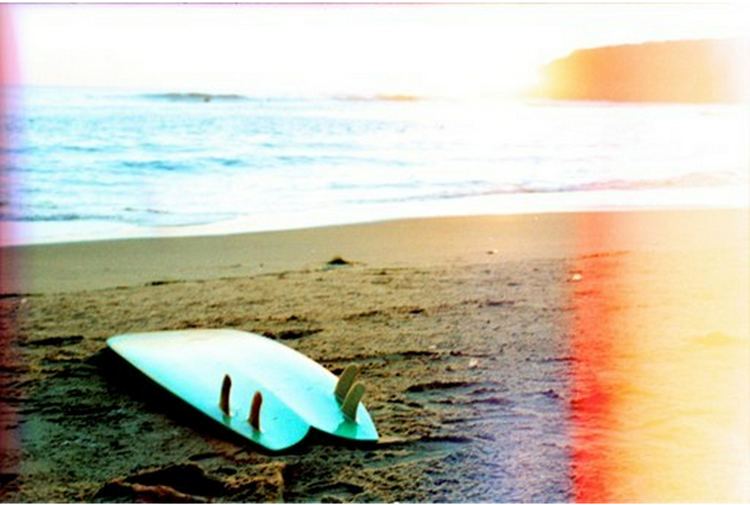
For specific surf spots, the state of the ocean tide can play a significant role in the quality of waves or hazards of surfing there. Tidal variations vary greatly among the various global surfing regions, and the effect the tide has on specific spots can vary greatly among the spots within each area. Locations such as Bali, Panama, and Ireland experience 2-3 meter tide fluctuations, whereas in Hawaii the difference between high and low tide is typically less than one meter.
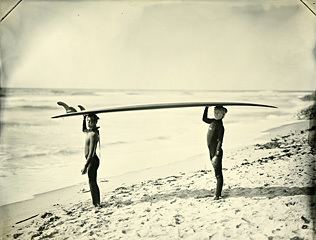
Each surf break is different, since the underwater topography of one place is unlike any other. At beach breaks, the sandbanks can change shape from week to week, so it takes commitment to get good waves.
The saying "You should have been here yesterday," became a commonly used phrase for bad conditions. Nowadays, however, surf forecasting is aided by advances in information technology, whereby mathematical modeling graphically depicts the size and direction of swells moving around the globe.
The quest for perfect surf has given rise to a field of tourism based on the surfing adventure. Yacht charters and surf camps offer surfers access to the high quality surf found in remote, tropical locations, where tradewinds ensure offshore conditions.
Along with the rarity of what surfers consider truly perfect surf conditions (due to changing weather and surf condition) and the inevitable hunt for great waves, surfers often become dedicated to their sport in a way that precludes a more traditional life. Surfing, instead, becomes their lifestyle.
The goals of those who practice the sport vary, but throughout its history, many have seen surfing as more than a sport, as an opportunity to harness the waves and to relax and forget about their daily routines. Surfers have veered from even this beaten path, and foregone the traditional goals of first world culture in the hunt for a continual 'stoke', harmony with life, their surfing, and the ocean. These "Soul Surfers" are a vibrant and long-standing sub-group. Competitive surf culture, centered around surf contests and endorsement deals, and localism's disturbance of the peace, are often seen in opposition to this.
Localism
Even though waves break everywhere along a coast, good surf spots are rare. A surf break that forms great surfable waves may easily become a coveted commodity, especially if the wave only breaks there rarely. If this break is near a large population center with many surfers, territorialism often arises. Regular surfers who live around a desirable surf break may often guard it jealously, hence the expression "locals only." The expression "locals only" is common among beach towns, especially those that are seasonally encroached upon by vacationers who live outside the area. Localism is expressed when surfers are involved in verbal or physical threats or abuse to deter people from surfing at certain surf spots. It is based in part on the belief that fewer people mean more waves per surfer.
Some locals have been known to form loose gangs that surf in a certain break or beach and fiercely protect their "territory" from outsiders. These surfers are often referred to as "surf punks" or "surf nazis." The local surfer gangs in Malibu and on Hawaii, known as da hui, have been known to threaten tourists with physical violence for invading their territory. In Southern California, at the Venice and Santa Monica beaches, local surfers are especially hostile to the surfers from the San Fernando Valley whom they dub "vallies" or "valley kooks". The expression "Surf Nazi" arose in the 1960s to describe territorial and authoritarian surfers, often involved in surf gangs or surf clubs. The term "Nazi" was originally used simply to denote the strict territorialism, violence and hostility to outsiders, and absolute obsession with surfing that was characteristic in the so-called "surf nazis." However, some surfers reclaimed and accepted the term, and a few actually embraced Nazism and Nazi symbolism. Some surf clubs in the 1960s, particularly at Windansea in La Jolla, used the swastika symbol on their boards and identified with Nazism as a counter culture (though this may have just been an effort to keep out or scare non-locals.) The "locals only" attitude and protectionism of the Santa Monica surf spots in the early 1970s was depicted in the movie Lords of Dogtown, which was based on the documentary Dogtown and Z-Boys.
Localism often exists due to socioeconomic factors as well. Until relatively recently, surfers were looked down upon as lazy people on the fringe of society (hence the term "beach bum.") Many who surfed were locals of beach towns who lived there year-round, and were from a lower economic class. For that reason as much as any other, these groups were resentful of outsiders, particularly those who were well-to-do and came to their beaches to surf recreationally rather than as a way of life. Australia has its own history where surfers were openly treated with hostility from local governments in the sport's early days, and the tension never really went away, despite the sport's enormous increase in popularity. Maroubra Beach in Australia became infamous for localism and other violence chronicled in the documentary film Bra Boys about the eponymous group, although the surfers in the film maintain they are not a "gang."
Surf Gangs
Surf gangs often form to preserve cultural identity through the protection of beach towns and shorelines. If known territory is trespassed by members of another surf gang, violence usually occurs. Long Beach is home to one of the oldest and biggest surf gangs, called "Longos." Some surf gangs have been known to not only claim land territory, but also claim specific surfing waves as territory. Surf gangs have gained notoriety over the years, especially with the production of Bra Boys.
The Lunada Bay Boys (in Palos Verdes Estates, California) became the subject of a class action lawsuit in 2016.
Wolfpak
The Wolfpak is so named "because we run in a pack, working together. When you mess with one of us, you mess with all of us." –Kala Alexander''
The Wolfpak was originally composed of a few select surfers from Kauai, Hawaii who believed in respecting localism. Kauai, according to a Wolfpak member, is a place where one is raised to honor the value of respect. If you don’t show respect, then you can’t expect anyone to return the favor. This value is what led to the group’s effort to manage the chaos associated with North Shore surfing. Some notable members have been pro surfers Andy Irons and Bruce Irons, as well as the reality show 808 star and Blue Crush actor, Kala Alexander.
Wolfpak began in 2001 when leader Kala Alexander moved to North Shore in search for job opportunities, and found disorganization and lack of respect in the surf lineup at surf reef break, Pipeline. Alexander found it necessary to dictate some sort of organization in who would surf the Pipeline to both preserve the value of showing respect to one’s elders, i.e. those who were native to the land and had been surfing for many years, and also protect surfers from the reef’s potentially life-threatening waves.
The waves at Pipeline can reach over 20 feet and its powerful disposition has taken the lives of professional surfers. If a visiting surfer dropped in on another surfer, unknowing of the wave’s nature, he could cause serious harm or death to the former. On a related note, some surfers aren’t ready to handle Pipeline. These observations led to the Wolfpak’s proactive enforcement on the North Shore.
The Wolfpak’s ways of preventing the aforementioned consequences of Pipeline popularity have gotten attention through their violent means. In an incident where a tourist cut off a friend of Alexander’s in a dangerous six-foot swell, the Wolfpak leader beat up the visitor for his poor decision and later reflected on the positive outcomes native enforcement could bring. Comments from anonymous locals show that the presence of Wolfpak is well perceived, if not intimidating. Though, some locals who hold similar values of cultural respect support what the members are trying to do.
Alexander doesn’t view Wolfpak as a gang, but says they look out for every local Hawaiian. Embedded in the brotherhood’s philosophy is respect for others. They attempt to preserve this way of life and realize the implications that a lack of respect can have on Hawaiian culture.
"I don't care if it's Kauai or Brooklyn. And I believe wherever you go, locals have the right of way. That's how it should be, and how it used to be here."- Kala Alexander
Bra Boys
The Bra Boys are a popular surf gang founded in Maroubra, a beachside suburb in the Eastern Suburbs of Sydney, Australia. They established international fame and attention in 2007 with the release of Bra Boys: Blood is Thicker than Water, a documentary about the bonds and struggles of the many gang members. The Bra Boys name originates both from the slang word for brother, and as a reference to the gang's home suburb, Maroubra. Gang members tattoo "My Brothers Keeper" across the front of their chests and the Maroubra area code across their back.
Many of the Bra Boys came from impoverished homes and families torn apart by drug use. Brothers Sunny, Jai, Koby and Dakota Abberton, came from an especially difficult upbringing. To them the Bra Boys were much more than a gang, they were a group of friends, a family of their own that loved to surf and always stood up for each other. The documentary, written and directed by the gang members themselves, showed the raw gritty side of a surf life previously glamorized by Hollywood.
Surf terminology
Surfing (particularly in Southern California) has its own sociolect, which has comingled with Valleyspeak. Words such as "dude", "tubular", "radical", and "gnarly" are associated with both and Northern California created its own unique surf terms as well that include "groovy", "hella", and "tight". One of the primary terms used by surfers around the world is the word "stoked". This refers to a mixed feeling of anxiety and happiness towards the waves breaking. Surfers have often been associated with being slackers or 'beach bums' (with women being known as 'beach bunnies').
Beach bunny
A beach bunny is general North American popular culture term for a young woman who spends her free time at the beach. In surf culture it may also refer to a female surfer. Beach bunnies are known for the amount of time they spend sun tanning and are usually represented wearing bikinis, see Muscle Beach Party and Gidget.
Shaka sign
The shaka sign, associated with Hawaii, origins unknown, is a common greeting in surfer culture.
Issues affecting surfers
Environmental damage, and increasing riparian development may continue to increase pressure on the sport. Oil spills and toxic algae growth can threaten surfing regions.
Some of these stresses may be overcome by building of artificial reefs for surfing. Several have been built in recent years (one is at Cables in Western Australia), and there is widespread enthusiasm in the global surfing community for additional projects. However, environmental opposition and rigorous coastal permitting regulations is dampening prospects for building such reefs in some countries, such as the United States.
Surf Environmentalism
Surfing, as a sport, is heavily dependent on a healthy environment. As a result, interest groups have blossomed to influence the utilization of coastal properties relevant to surfing. There is conflict between surfers and other user groups over the allocation of coastal resources. Common to most disputes are two issues, disposal of sewage and toxic waste into near shore waters and the formation of harbors, breakwaters and jetties. Sewage and toxic waste almost always affects mammals in a negative way. Coastal construction and engineering projects can have either good or bad effects on surf breaks. While some sources suspect the effectiveness of surfing environmentalist groups, notable victories have been achieved by surfers championing their issues. Some examples of these victories include:
Surf tourism
The surf industry is a billion dollar industry whose popularity as a recreational sport has gained momentum in many coastal areas around the world over the past decades. With the publicizing of new surf destinations through television, movies, magazines, and the Internet, and other media, as well as greater access to traveling accommodations, surf tourism has created large impacts on local communities and environments in developing countries as well as in established areas around the world. Tourism is not always the main reason for fast expansion in developing countries, but under those circumstances groups of activists and non-profits such as Surfrider Foundation, SurfAid, IJourneyGreen, Surf Resource Network, World Tourism Organization, NEF, and UNESCO have begun working with locals and their governments to minimize the negative impacts of tourism upon host communities’ environments and maximize and equitably distribute the positive impacts of tourism. Some of the negative impacts of tourism relevant to surf dominant communities are:
Some of the positive impacts of tourism relevant to surf dominant communities include:
Spirituality
Many surfers combine their love of the sport with their own religious or spiritual beliefs. In Huntington Beach, California for example, a local Christian non-denominational church occasionally meets on the beach for Sunday early-morning services. After the closing prayer, the minister and congregation paddle out for a morning session. Many surfing communities organize and take part in memorial services for fallen surfers, sometimes on the anniversary of passing such as the Eddie Aikau memorial service held annually at Waimea Bay, Hawaii.
Participants in the memorial service paddle out to a suitable location with flower leis around their necks or with loose flowers (sometimes held between their teeth). The participants then get into a circular formation, hold hands, and silently pray. Sometimes they will raise their clasped hands skyward before tossing their flowers or leis into the center of the ring. Afterward, they paddle back toward the beach to begin their surf session. Often these services take place at sunrise or sunset. In locations with a pier, such as Huntington Beach, Orange County, California, the service can take place near the end of the pier so that any non-surfers, such as elderly relatives, can watch and participate. Often the participants on the pier will throw down bouquets of flowers into the center of the ring.
Surf music
Surf culture is reflected in surf music, with subgenres such as surf rock and surf pop. This includes works from such artists as Jan and Dean, The Beach Boys, The Surfaris ("Wipe Out!"), Dick Dale, The Shadows, and The Ventures. The music inspired dance crazes such as The Stomp, The Frug, and The Watusi. While the category surf music helped popularize surfing, most surfers at the time, such as Miki Dora, preferred R&B and blues. A newer wave of surf music has started in the acoustic riffs of artists such as Jack Johnson and Donavon Frankenreiter, who are both former professional surfers.
Surf rock
Surf pop
Instrumental
Surf visual art
Many people have incorporated the free spirited and hippie nature of many surfing lifestyles into their paintings and murals such as the Surfing Madonna mosaic in Encinitas.
Fashion
Surfwear is a popular style of casual clothing, inspired by surf culture. Many surf-related brand names originated as cottage industry, supplying local surfers with boardshorts, wetsuits, surfboards or leashes, as well as other hardware.
An early Australian surf fashion company was Kuta Lines, founded by Tony Brown after visiting Bali in 1973. Brown adapted Indonesian textiles and designs for his surfwear. From the 1980s, Kuta Lines used traditional ikat weaving and dyeing techniques, adapted to a heavier, fleecy fabric for cool climate surfing.
Some other clothing brands include O'Neill, Rip Curl, Quiksilver, Town & Country, Ocean Pacific, Billabong, Oakley, DaKine, Reef, Roxy, Volcom, Element, Hurley, Von Zipper and RVCA.
Events
International Surfing Day celebrates the sport and lifestyle on June 20.
Surfing contests
Competitive surfing is a comparison sport. Riders, competing in pairs or small groups, are allocated a certain amount of time to ride waves and display their prowess and mastery of the craft. Competitors are then judged according to how competently the wave is ridden, including the level of difficulty, as well as frequency of maneuvers. There is a professional surfing world surfing championship series held annually at surf breaks around the world.
Although competitive surfing has become an extremely popular and lucrative activity, both for its participants and its sponsors, the sport does not have its origins as a competitive pursuit. It is common to hear debate rage between purists of the sport, who still maintain the ideal of "soul surfing", and surfers who engage in the competitive and, consequently, commercial side of the activity. An organisation called the Spirit of Surfing has chosen not to accept surf label sponsorship, since an association of that sort could detract from the sentiment they wish to promote.
Surfing organizations
Boardsports
Surfers developed the skateboard to be able to "surf" on land. Later came windsurfing (also known as sailboarding), bodyboarding, wakeboarding, wakesurfing, skimboarding, snowboarding, riverboarding, kiteboarding, sandboarding, mountainboarding, carveboarding all now competitive sports. Another fast growing boardsport is skurfing a mix of surfing and more conventional water sports in which the participant is towed behind the boat. Pineboarding and sandboarding are recreational boardsports.
Films about surfing
The surf culture is reflected in film. Bruce Brown's classic movie The Endless Summer glorified surfing in a round-the-world search for the perfect wave. John Milius's homage to the Malibu of his youth in Big Wednesday remains a poignant metaphor for the similarities between the changing surf and life. The 1980s cult classics North Shore and Fast Times at Ridgemont High serve as mainstream introductions to teenage, light-hearted, superficial surf life (from the "heyday"). Beach movies such as the Gidget series, and Beach Party films such as Beach Blanket Bingo are less reverential depictions of the culture. Liquid Time (2002) is an avant-garde surf film that focuses solely on the fluid forms of tubing waves. Blue Crush (2002) is a film about surfer girls on Hawaii's North Shore. The sequel, Blue Crush 2 (2011) is a film about a California rich girl who travels to South Africa to find out more about her mother and herself. The 1991 film Point Break involves a group of bank robbers who are also surfers. The 1987 comedy film Surf Nazis Must Die features surfer gangs in the wake of an earthquake that destroys the California coastline. Soul Surfer is a biopic about real-life surfer Bethany Hamilton in Hawaii.
Some film events include the Sydney Fringe Festival, Bondi Beach, Sydney, Australia. the Surf Film Festival, Saint Jean de Luz Surf Film Festival, Wavescape Surf Film Festival in South Africa, and the New York Surfing Film Festival.
TV documentary series
TV episodes featuring surfing
Fictional surfers in TV
• Duke: "Man, five days on that board and I'm nothing but skin and bones." • Ginger: "What skin." • Mary Ann: "And what bones."
Television advertising
Major advertisers appeal to the surfing market (and to would-be surfers) with commercials featuring, in some cases famed surfing athletes, such as the Coca-Cola commercial featuring Kalani Robb and Maila Jones, and a Kashi food commercial featuring Kashi nutritionist and surfer Jeff Johnson, 2006
Surfing magazines
Conceptual metaphor
The word "surf" is polysemous; having multiple, related meanings. "Surfing" the World Wide Web is the act of following hyperlinks. The phrase "surfing the Internet" was first popularized in print by Jean Armour Polly, a librarian, in an article called "Surfing the INTERNET", published in the Wilson Library Bulletin in June 1992.
Popular
Academic topics
Natural science
Comics
Prose
Philosophical novels
